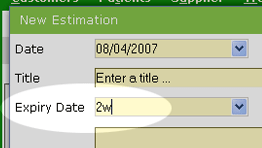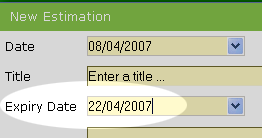Elements
There is a pdf attached with the old version of this page. This page needs to be rewritten.
Why not help out fellow current and future OpenVPMS community users by contributing some documentation? To update this information just edit this page and create a new revision of the page.
The original images can be found by clicking the insert/edit image button on the toolbar when editing and then browsing the server. The files are located in a folder called "elements_page_images".
Elements
Welcome to Elements
This appendix details the various tools that are found in every page of the web application. Knowing how these different tools work will make learning the new program much easier.
Common Key Strokes
The ALT combinations
Many of buttons and links of the application have an underlined letter. This is the shortcut letter that when combined with the ALT key, will allow you to perform that action as if you had pressed the button or link. Shortcut keys are generally quicker then using a mouse.

On this NEW button pressing ALT, then N, will add a New item:
The ENTER key
The ENTER or RETURN key has a special behaviour. When pressed it does not move the cursor to the next box (as many people are used to) but rather sends whatever selection or keystrokes the user has entered, to the program.
What happens next depends on what sort of input you are entering.
Example- Using ENTER to complete a macro
This user is entering an expiry date in a new Estimation. The user wants the estimation to expire in 2 weeks and has entered "2w" as a macro.
To show the calculated date, the user presses ENTER:
Note that the cursor has remained in the Expiry Date box, allowing the user to change the date if needed.
To move to the next box, the user will need to press TAB.
The TAB key
The TAB key is used to move to the next box. Generally it will select the contents of that box, allowing quick editing and replacement of text. To move back to the previous box, press SHIFT+TAB.
The Mouse
- The left click - Used to select items from lists or where shortcuts don't exist.
- The right click - Does not work in browser applications.
- The wheel - Use to scroll quickly in long lists or the contents of a screen.
The Links
Links are shortcuts which can be found in many areas within the program. They allow rapid movement to another area of the program whilst automatically selecting the item of interest.
Links are usually underlined and blue but this is dependent on the settings of the browser you are using.
|
|
Examples of links from Patients and Schedules
|
The Text Box
|
Text boxes are just that. Boxes that that allow you to type in them to enter data. Text boxes can also accept Macros. These are text shortcuts or abbreviations that when ENTER is pressed, expands into more meaningful text. Spell checking usually appears as a red squiggly line depending on your browser settings. |
 |
The Search Button
Text boxes also can also be linked to a SEARCH button. This small binocular adorned button  indicates this text box is associated with a list of possible entries (See "The List Dialog" below). indicates this text box is associated with a list of possible entries (See "The List Dialog" below). These elements are very common and a good understanding of their operation, speeds data entry considerably. |
 |
The following logic will be applied;
1. If there is a SINGLE item that matches the letters typed, the box will complete the entry.
2. If there are MULTIPLE items that match the letters typed, the box will open the list and limit the list to those items.
3. If there are NO items that match the letters typed, the box will do nothing.
|
|
Example 1: Using the List Dialog
|
|
|
Example 2: Autocompletion with unique entry
|
- Printer-friendly version
- Login or register to post comments














